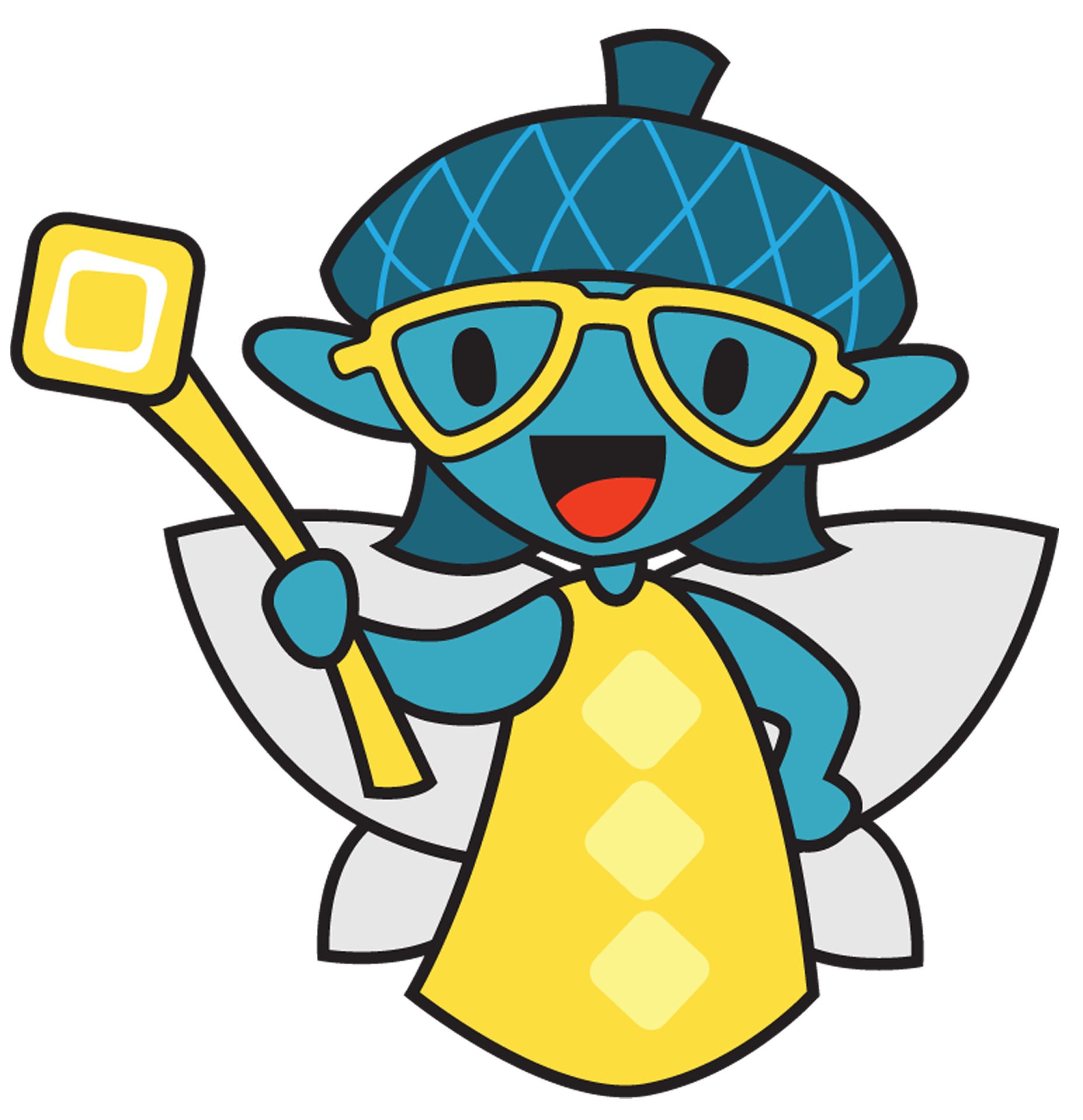
Developing solid reading and writing skills are critical to children’s success in all learning activities and can be a determining factor for their success in life. There are thousands of apps claiming to help support early literacy, but few—if any—have any research to support their claims.
Selecting effective early literacy apps requires attention to more than what is mentioned in online reviews. Some apps provide ideal instruction and practice for young children; others do not. Adults who choose apps need guidelines if their young users are to gain full benefits. The following five questions can help guide decisions about what apps to use and which to avoid. The questions are based on key principles from research on early literacy learning.
1. Are sounds pronounced and represented with letters accurately?
Many early literacy apps don’t accurately represent the sounds that letters make. English is a highly irregular language. Some letters make more than one sound, and some sounds are associated with more than one letter. When letters combine, all kinds of irregular things start to happen. Here are two particular issues to watch out for.
Distorted sounds. When two consonants combine to represent one sound, such as sh, ch, or ng, some apps try to isolate the sounds of the individual letters, sneaking in an extra sound to represent the second letter. Children need to learn that the letter combinations sh, th, wh, ch, and ng make single sounds, which they can recognize in the words they hear every day. The opposite is true with other sounds. The letter x represents two sounds /ks/, and the single letter q represents /kw/. When selecting apps for young children, be sure that children know that some letter combinations stand for just one sound while other single letters can stand for two sounds.
Added sounds. Some apps mistakenly add additional sounds when teaching letter sounds. For example, the sound of the letter “L” should be taught as simply continued (lll), but many apps add a stressed /uh/ vowel (luh, luh, luh). Watch for added sounds particularly with consonants such as l, f, r, v, s, z, m, th, sh, and n. These are more correctly pronounced as continuous sounds.
Some consonants when produced in isolation from a word are particularly prone to being mispronounced in early childhood apps. Sounds such as /b/, /p/, /t/, /d/, /k/, and /g/ are produced with a plosive or exploding sound that requires a vowel to be added at the end. When producing these sounds in isolation, it is important not to put additional stress on the extra vowel. Some apps emphasize the vowel sound when the consonant sound is produced by itself: for example the /b/ sound may be taught as b-uh. Literacy apps should produce these plosive sounds with an unstressed vowel attached or softly repeat the consonant to keep from adding extra stress to the vowel. Select apps that don’t overly stress the added vowel sound.
2. Does the app confuse things as it tries to simplify?
When choosing early literacy apps, be on the lookout for concepts that are oversimplified or confusing. Pay particular attention to the way the app treats vowels. Like consonants, these letters can have more than one sound, and the same sound can have more than one spelling. But vowels are more difficult for children to learn because each vowel letter can have several different sounds.
One a. Some apps match only one sound to each vowel and do not change the vowel sound to match the example words. One app we reviewed gives the letter a the sound in at but then produces that same sound for the a in the word all. Listen to the words at and all; the vowels are produced in different ways—the a in at is produced with unrounded lips and the tongue is low in the mouth, but the a in all is produced with rounded lips and the tongue in high in the mouth. Giving the same sound to a letter that can actually make different sounds is incorrect and can create confusion.
The vowel sounds can really become confusing when an app gives multiple examples of words that begin with that letter because the sound often varies. For example, the words art, air, any, ant and apron all start with the letter a, but the initial a letters represent different a sounds. Beware of apps that rapidly generate words beginning with a particular vowel, as faulty vowel sounds can sneak into even carefully composed lists.
Logical instructional sequence. Some apps have little or no logic for the sequence in which they introduce skills. Effective learning in phonics requires building from basic to more advanced skills.
Children should be taught to read short vowel words (such as cap, bed, sit, dog, and bug) before long vowel words (like cape, bite, and note). Some apps intersperse phonic patterns with short and long vowels. Following ā (long vowel) with ă (short vowel) words may seem logical to an app designer. But doing this exposes children to first-grade-level phonic skills (long vowels) before mastering the kindergarten skills (short vowels), which need to be stable before they are ready to take this step.
Another problem with overload occurs as some apps teach multiple spellings of a particular vowel sound at the same time. For example, the long o can be spelled with a silent e as in note, a single “o” as in no, or an “oa” as in boat. Children will eventually learn all these spellings, but expecting beginning readers to learn them all at once isn’t realistic. Young children need to learn basic patterns first and overlapping patterns separately.
3. Does the app try to blend things that shouldn’t blend?
Sounds combine together to make words, but blending of sounds into words can be trickier than it might appear. Children need to learn that not all letters are pronounced when blending sounds into words and that sounds can be combined only in left to right order. Some apps, however, violate these important principles.
Including a sound that isn’t there. One serious mistake found on some apps is to provide a sound for each letter in a word even if the word contains a silent letter. For example, words like cake and bike end in the silent e. One app we reviewed provides an individual sound for each letter in a segmented word (such as c-a-k-e) so that even the silent e is given a sound. Adding the extra sound so children can count letters as they process them is misleading. The word cake does not have four sounds—it only has three, and they’ll be confused if their reading app tries to blend in an extra ingredient.
Pronouncing sounds out of sequence. Some apps allow users to tap any sound in any order as they attempt to combine sounds into words. Children should not tap on letters from right to left in order to isolate and hear the individual sounds in a word. Individual sounds that will be combined into a word should be treated only from left to right, since that is the way readers need to decode them.
4. Does it provide adequate modeling and feedback?
No parent or teacher would attempt to teach a child a sound without demonstrating it first. But some apps do. When choosing early literacy apps, be sure that they provide sufficient exposure to sounds that children need to hear. It is also important to attach sounds and sound patterns to letters.
Limited modeling of sounds. Modeling consists of frequently exposing children to the sounds that go with letters and sound patterns in words. Modeling sounds and sound patterns is essential for teaching skills like rhyming, alliteration, word recognition, and letter-sound associations. For children to recognize printed words and be able to translate combinations of letters and letter patterns into meaningful words, they need to have lots of opportunities seeing and hearing the relationship between spoken and written word parts and words. Children should be aware of the sound patterns for any printed letter patterns they are expected to read. For example, as children learn to read short vowels in a word family like cat, bat, hat, fat, and sat, the app should provide many opportunities to hear –at in words and to separate the -at word ending from the whole word (e.g., b-at and r-at). As they hear and learn to recognize sound patterns within words they see on the screen, beginning readers learn to identify these patterns as they will encounter them in additional written words.
Rhyming is an important early literacy skill, but some apps expect children to demonstrate this skill without first hearing examples of rhyming words. Some apps that claim to teach rhyming have children drag pictures of rhyming words together without allowing them to hear the words pronounced. When children touch images, the app should say the names of pictured rhyme words so children learn that rhyming words sound the same at the end.
This same principle applies to “reading” words that have been blended together from individual letters. Some of the apps we reviewed have a separate button to allow users to hear a word they see on the screen, but hearing the word pronounced isn’t integrated into the activity. Having letters say their sounds as children push them together to form a word allows them to play with blending. When children push together letters but don’t hear the sounds, they learn to push letters together randomly. This doesn’t reinforce the way that sounds are put together to form words. Children should be able to play with the sounds to create a word that is then “read” back to them.
Insufficient feedback. When a child’s response is not correct, most of the apps we reviewed give a generic reply such as “try again” or simply repeat the directions. It’s difficult for children to know why what they did was wrong if they don’t receive any directions or feedback on how to correct it. Similarly, when a child gives a correct response many apps give generic praise (like “great job!”) or make a special sound (like applause). But they do not tell the child why the answer was correct. If the children guess an answer that happens to be correct, simply saying “great job!” doesn’t help them learn. In contrast, an app should provide specific feedback such as “yes, the words back and sack rhyme” or “Uh oh, track and car don’t rhyme—but track and crack do sound alike”. Both moments – when children get it right or when they make a mistake—should be used as learning opportunities.
5. Does it demand too much of the child?
In selecting early literacy apps, it is important to consider whether the child will be able to understand what is expected. Children who do not understand a task presented in an app will likely end up randomly pressing buttons to see what will happen—this is not effective learning. One way to find out how well a child understands an app is to ask the child to show or explain how it works.
Some early literacy apps we reviewed use complex or unfamiliar words to illustrate sound or phonic patterns. One rhyming app asked the child to match pictures of a ram and a tram because they rhyme—but matching a goat with a train doesn’t really make any sense. Another app we reviewed had children identify a picture of “soil” and a picture of “dill weed”. Obscure words or pictures that are hard to identify can interfere with the child’s ability to learn an early literacy skill. Even if the focus of the app seems appropriate for the child’s current level of dealing with sounds, such as rhyming or blending, carefully review the level and nature of vocabulary used.
To sum it all up
Apps can be great tools to teach early literacy skills. But they must be instructionally sound. Technology can enhance early literacy instruction if selected based on solid research principles. Asking the five questions we present here before selecting an early literacy app will help make sure you are providing children with the most effective learning opportunities to enhance their early literacy skills and prepare them to be successful readers and lifelong learners.
 Barbara Culatta is a professor of communication disorders at Brigham Young University. She has written books, articles, and chapters on language and literacy interventions. She received a federal grant that resulted in the development of Systematic and Engaging Early Literacy, a website with free educational materials. Barbara was also instrumental in creating an early literacy app and has conducted language and literacy programs in Spanish and English in Head Start and public school settings.
Barbara Culatta is a professor of communication disorders at Brigham Young University. She has written books, articles, and chapters on language and literacy interventions. She received a federal grant that resulted in the development of Systematic and Engaging Early Literacy, a website with free educational materials. Barbara was also instrumental in creating an early literacy app and has conducted language and literacy programs in Spanish and English in Head Start and public school settings.
 Kendra M. Hall-Kenyon is an Associate Professor in the Department of Teacher Education at Brigham Young University. She received her PhD in Cognitive Studies from Teachers College, Columbia University. Her research interests include early literacy assessment and instruction and early childhood teacher education.
Kendra M. Hall-Kenyon is an Associate Professor in the Department of Teacher Education at Brigham Young University. She received her PhD in Cognitive Studies from Teachers College, Columbia University. Her research interests include early literacy assessment and instruction and early childhood teacher education.
 Gary Bingham is an Associate Professor in the Department of Early Childhood and Elementary Education and Associate Director of the Urban Child Study Center at Georgia State University. His research examines home and school factors that contribute to children’s language and literacy development.
Gary Bingham is an Associate Professor in the Department of Early Childhood and Elementary Education and Associate Director of the Urban Child Study Center at Georgia State University. His research examines home and school factors that contribute to children’s language and literacy development.



